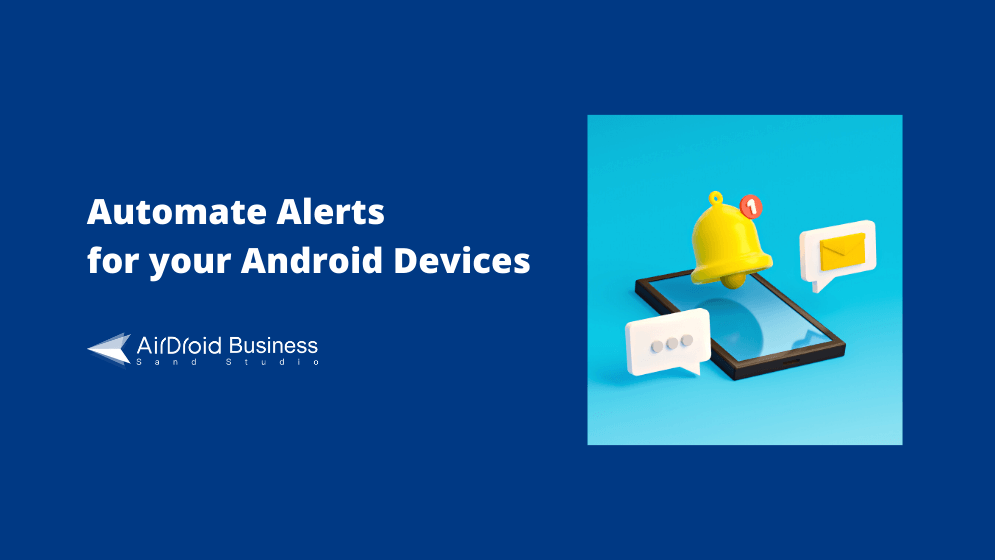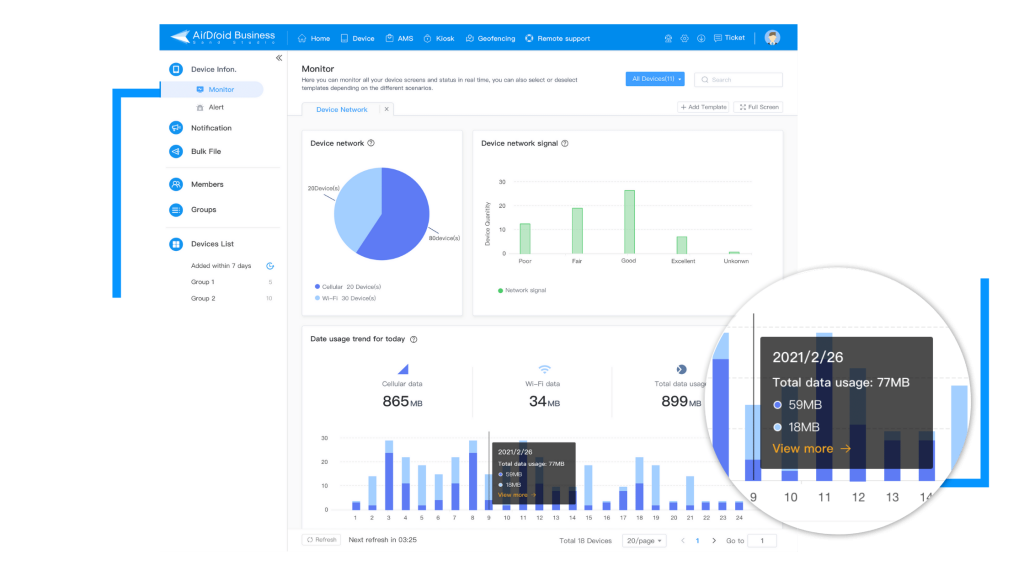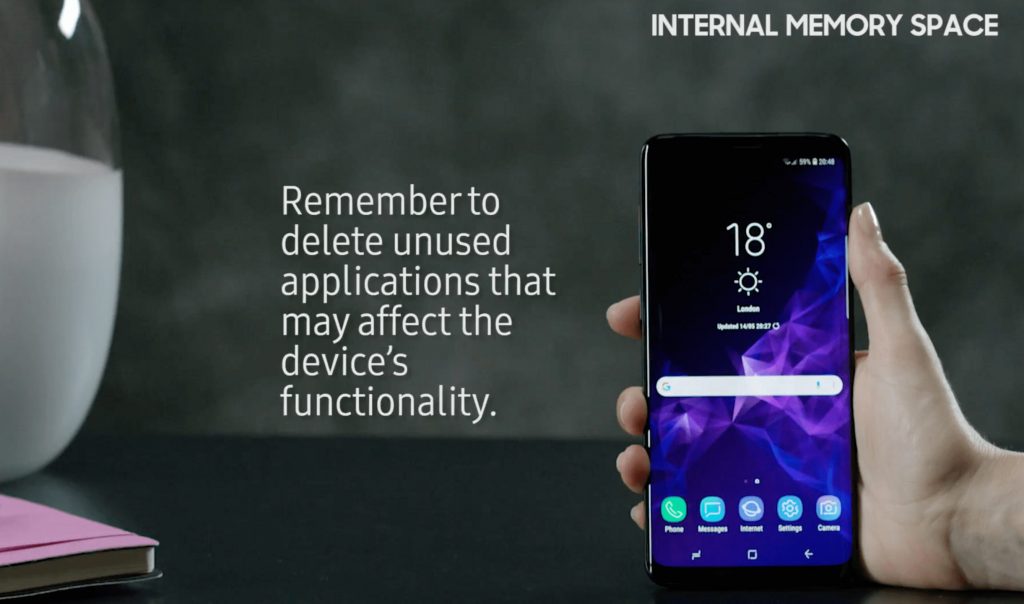Last Updated on April 28, 2023

Why does having MDM alerts matter for your business?
Having the ability to monitor your devices’ status from various angles can be critical to business success. Android devices, just like other digital devices, will slowly depreciate over time with use and encounter errors. For devices that are being used heavily by employees and customers on a daily basis, it is likely that these will start to malfunction within a few years. Such issues are almost impossible to prevent. As a result, businesses are responsible for providing assistance to help resolve these issues immediately before they result in unsatisfied customers and reduced business productivity.
MDM alerts and workflows allow IT admins and managers to get the latest device performance without needing to constantly keep their eyes on the monitor to watch over the remote devices and refresh pages every few minutes manually. Once the automatic alerts are set up, instant notifications will be sent to the team to report a device malfunction so the team can respond to the issue and resolve it right away. There are many advantages of using MDM alerts for your business, they include helping companies to save labor costs, reduce device downtime, receive timely notice of critical activities, and increase overall business productivity.
How to choose the right MDM alerts and tools for your business?
The importance of each mobile device management alert and workflow action varies by use case. MDM alerts should be based off of your business use case and needs with the ability to customize triggering events accordingly and allow real-time responses. By implementing this together with workflows, IT teams can plan ahead and schedule recurring tasks more efficiently. These tasks can be as simple as clearing device data and rebooting device, to more advanced actions like applying policy and kiosk profiles. This will help to shorten the response time of your IT admins while ensuring the security of your company assets.
Once the alerts are set up with other MDM tools such as remote access and remote control, it will help your IT team to reduce response time and fix problems and troubleshoot device errors immediately, which in turn will improve overall employee and business productivity.
AirDroid Business MDM Alerts & Workflows
AirDroid Business now offers more than 10 customized triggers for your Android alert notices. You can also control who within your team will receive the notifications. These alerts are included in the Device Workbench under the “Alerts & Workflow” tab. IT teams are able to keep track of their Android devices from a 360-degree view, from device performance and app running status to location tracking, and even external HDMI connections. Additionally, you can also create your own workflow by pairing your alerts with an automated task to perform on managed devices.

AirDroid Business MDM Alerts include:
- Schedule a recurring task *new
- Device online/offline status
- Biz Daemon (MDM system) permissions control
- Device cellular data usage
- Individual app data usage
- App running & foreground app status
- Battery status (capacity, temperature, charging status)
- Device storage capacity
- Device motion and geofencing
- Kiosk Mode/device lockdown
- Device screen lock
- SIM card placed/removed
- External HDMI connection
- … and more coming your way!
12 MDM alerts and workflows your business should set up

Device online/offline status
The online/offline status alerts can be useful for companies that need to monitor unattended devices and make sure they are operating as expected. When a device is down or gets disconnected from the MDM control, it triggers the offline alert and sends an instant notification to the IT admins so they can quickly react to it and get the device back up again.
For example, when a digital signage for displaying ads suddenly breaks down, the IT team will immediately get notified of the event so they can quickly contact the nearby store or staff to help reboot or reconnect the device to the remote management system. This effectively reduces device downtime and improves customers’ experience.
Device MDM Status
Enrolling your corporate devices to an MDM allows businesses to ensure all devices are compliant to corporate controls and policies. Thus, it is especially important to keep all devices well-connected to your MDM system at all times. With this alert, it will tell you when a managed device is disconnected from the MDM control or when the required control permissions like Kiosk Mode or Remote Control are disabled unexpectedly by notifying your IT team via email or in-app notifications. This allows them to take quick actions and protect both the device and the data stored on it.
IT admins can also take advantage of the workflows feature to set up a trigger action to execute when a controlled device is unlocked. Actions such as “apply a policy profile”, “lock device screen”, or “reset the device to factory settings” will help protect your corporate devices and data security before your IT admins are available to troubleshoot and examine the issue. This will help ease some pressure on the IT teams as well as reduce hectic workloads.

Cellular data usage
Keeping track of your devices’ data usage is a way for businesses to be cautious of suspicious device activities and prevent unauthorized device use and access. Excessive data usage can often indicate an unapproved use of a device that could potentially be a threat to corporate data. For company-owned devices, it is important to ensure that device security is compliant with company policies to protect corporate and customer data.
Setting real-time alerts when a device reaches the data limit can help to catch suspicious device activities such as transferring large files that could be an act of stealing or leaking company information or downloading personal apps that could be affecting the employee’s overall productivity at work.
In a worst-case scenario, excessive use of data could also be a sign of malicious malware at work. It is possible that a compromised phone may be consuming an excessive amount of cellular data by running a hard-to-detect virus such as Spyware and Trojan horses in the background. With the alerts, it allows businesses to act fast and take the necessary security measures to eliminate the cause of excessive data usage before it puts your company’s data security at greater risks.
Data Usage for Individual Apps
If you need to watch out for the data usage of a specific mobile application to avoid going over your company’s data plan and incurring extra charges, this alert is the perfect solution. It allows you to set data limits and notifications for individual apps so the IT team will be informed instantly when an app on a device has gone over the limit. The IT team will also be able to find out which device is responsible for it.
IT managers can start by looking into which apps their employees tend to use the most other than work apps and which usually consume a large amount of data like YouTube, Facebook, Spotify, and other streaming and gaming apps. Although it is difficult and almost impossible to prevent employees from using company resources for personal purposes, an alert like this will help to enforce rules to make sure that personal use of apps and mobile data does not become excessive.
Network connectivity
For corporate devices that need to be up and running 24/7, it is crucial to make sure those devices have a secure and stable network connection, whether it is through Wi-Fi or a cellular network. The use case of network connectivity varies; however, the connectivity alert should always reflect real-time status. That way, when the network starts breaking down, the alert allows IT admins to react fast and switch to a backup network or data if necessary until the primary network is restored.
This alert is especially critical to businesses that are time-sensitive and require constant access to data from the cloud. Take healthcare as an example. Clinics and hospitals rely heavily on pulling out patients’ records from their database system hosted on the cloud. With a real-time network connectivity alert, it will trigger an immediate response when a device has lost internet connection.

Battery status
It is true that battery life can vary significantly from device to device, especially when companies deploy different types of device models. Having the ability to keep track of your devices’ battery status such as battery charging status, temperature, and capacity can help you identify if a certain device model is more likely to drain the battery faster than the others or if there is a problem with the device hardware that needs to be replaced soon to optimize your inventory pool.
Another use case with battery drops can be a sign that an unattended device has been unplugged unexpectedly. This can be an indicator that the device is either stolen or accidentally removed from the charging station. An example alert for such scenario can be set to “trigger alert when device battery drops to 95%” for devices like self-serving kiosks that should be plugged into a power outlet at all times.
Device Application Status
An application status alert can be set up when businesses are pushing app updates on a large fleet of devices (e.g. 100 or more devices). This will help IT admins quickly identify the devices that have failed to update/install the newest app version. In addition, an app status alert is needed for use cases when an organization uses different device brands and models and not all devices are compatible with your company’s custom apps. With the real-time alert, it can help your IT managers to identify the most optimized device brand and models (or a specific operating system) for your business operations.
For businesses like chain restaurants and retail stores, they are usually heavily reliant on POS devices such as POS kiosks and mPOS to run payments and keep track of inventory. An app status alert can be handy for chained companies that will need to update apps on many devices across different regions, allowing them to swiftly troubleshoot the remote devices that were unable to successfully complete the process. This helps businesses to reduce device downtime and avoid affecting customer experience.

Foreground App Status
For unattended and dedicated devices (otherwise known as single-purpose devices) used to drive a particular program for a specific business task such as digital signages, restaurant and airport kiosks, POS, and so on, it is important to ensure that these devices are working properly at all times to keep the business going. This means that the application used to run the program and display business-critical content on screens must be kept in the foreground. Doing so will ensure that your application stays active on the home screen and does what it is supposed to do. For example, businesses that use digital signages to promote their campaigns will need their CMS app running continuously and presenting campaign ads properly to the public. Restaurants that offer self-service ordering will need to make sure that their Kiosks are locked at the ordering app with single-app mode so customers are not able to exit the app by themselves or by accident and will ensure a smooth and hassle-free ordering experience.
This alert will send out a notification right when a foreground app is no longer active or has stopped abruptly. That way, IT agents or onsite staff can quickly react to an app or device crash and be able to get it back up in no time. Having this alert will help businesses reduce device downtime effectively and ensure their business-critical apps are running actively and interacting with end users appropriately.

Storage capacity
There are many ways that could be a precursor of device malfunction or shutdown. Besides battery temperature, when a device is getting close to its storage limit, it is common that the device will start to slow down and eventually stop operating. Storage capacity issues can suggest potential unauthorized or improper use of company-owned devices when users have used the device for personal downloads such as Google Play apps. In other cases, the status of device storage could also simply mean that the local storage has exceeded the business expectation and will require an update with an external memory card or a secondary plan.
Having storage capacity alerts allows IT specialists to be proactive and take action before device performance starts lagging due to insufficient storage. Additionally, it is important to keep in mind that all Android devices will need a minimum of 500MB to 1GB of free space in order to function properly. Some preventive actions to help free up more device storage space could be deleting unwanted apps or data, clearing the cache, switching from local storage to cloud storage, and upgrading the device or storage, and more.

SIM Card Status
SIM card swapping or removing from a company-owned and managed device can put your device and company data at risk. This alert sends you a notification when a SIM card has been removed, replaced, or re-inserted into a managed device so your IT team can be notified and take proper measures immediately when such incident occurs to prevent data breaches or any other intrusions that may be harmful to your organization.
In addition, some MDM clients have reported that their employees would swap the SIM card from a company device and install it into their personal phones to take advantage of the company’s cellular data. That way, they are free from the restrictions on data usage that was set by the mobile device management controls which could result in extra charges on phone bills for the company. While this improper use of company resources is more of an internal management issue and will require further employee education on such ethical matters, this alert allows business owners and IT managers to be aware of this type of misbehavior from their employees and be able to set a more suitable company policy to address this issue.
Kiosk Mode Unlocked
A kiosk lock alert is an important device security mechanism, particularly for customer-facing devices like signage, reservation tablet, and self-serving kiosk. Having the ability to enable kiosk mode to restrict or lockdown usage and access for your device is essential. This can prevent and protect your devices from being tampered with by the end-users. With the kiosk alert turned on, it will immediately send the IT administrators a notification when a locked device has its restriction settings disabled by non-admin users.
For additional use cases, businesses can also set a specific action that will set off the alert and trigger the system to automatically lock the device for security. For example, when the system detects an abnormal device use on employee tablets such as transferring company-sensitive information or having too many failed login attempts to the corporate database, these suspicious behaviors will trigger the alert to notify the admins while auto-locking the device temporarily until the suspected intrusion has been cleared out.

Device Motion – Geofencing
Geofencing is a location-based security mechanism that allows administrators to set up policies to ensure corporate-owned devices are restricted to the configured geographic boundaries. For devices that are always on the go like devices used in transportation, device motion alerts can help identify unusual activities when a device has been idle for too long or a device has gone off the usual route. Once the manager has received the alert notice, he/she can then quickly check up on the driver to see if everything is okay or if an immediate rescue and substitute is needed.
On the other hand, device motion alert is not only limited to moving devices. It can also be useful for single-purpose devices that are designed to be used on-site only. If an on-site device has left its location, a geofence alert and an automatic device lock response will immediately be triggered. This is an essential workflow for businesses like mobile display stores and information kiosk stations to ensure mobile security.
We also offer a partner program for OEMs, ODMs, MSPs, and Resellers. If you are keen, click on the banner below to check out the details!









[…] It must send device alerts to admins regarding users’ attempts to bypass device […]